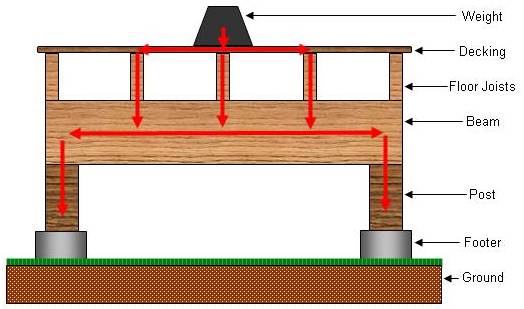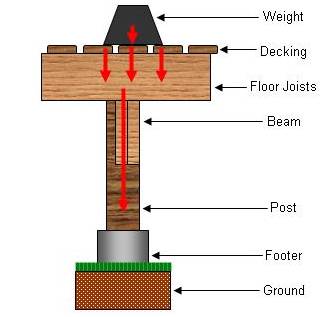Sensing skin' could monitor the health of concrete infrastructure continually and inexpensively
 n the MIT laboratory, researchers tested the "sensing skin" by attaching it to the underside of a concrete beam, then applying enough force to cause tiny cracks to form in the beam under one patch of the skin. Credit: Simon Laflamme, MIT
n the MIT laboratory, researchers tested the "sensing skin" by attaching it to the underside of a concrete beam, then applying enough force to cause tiny cracks to form in the beam under one patch of the skin. Credit: Simon Laflamme, MIT In 2009, the American Society of Civil Engineers (ASCE) assigned the grade "D" to the overall quality of infrastructure in the U.S. and said that ongoing evaluation and maintenance of structures was one of five key areas necessary for improving that grade. Since that time, federal stimulus funds have made it possible for communities to repair some infrastructure, but the field of high-tech, affordable methods for the continual monitoring of structures remains in its infancy. Instead, most evaluation of bridges, dams, schools and other structures is still done by visual inspection, which is slow, expensive, cumbersome and in some cases, dangerous.
Each structural member of the deck is designed to take weight and transfer it through connection to the ground. The decking material, takes the weight of the people and items that are on the deck, this weight is transferred to floor joists, which in turn transfer the load to the beams which in turn transfer the load to the posts which take the load to the ground, as shown in Figure 2.

Figure 2 - Transfer of load through post and beam construction
The method employed to join the joists to the beams and the beams to the posts makes a big difference to the structural strength of the deck and as well, its longevity.
The best construction method is to have beams sitting on the posts and the joists sitting on the beams as shown in Figure 2 above. Looking at a side view of the same figure, the lumber would be notched as shown in Figure 3 below.

Figure 3 - Side view of post and beam construction showing load transfer to ground
Although the aforementioned construction method provides the best possible support, there are some variations that can be utilized. You can notch the post so that only one of the beam members is actually resting on the post and the other is bolted to the first beam. Adding a support that is well fastened to the beam increases the strength as shown in Figure 4.

No comments:
Post a Comment